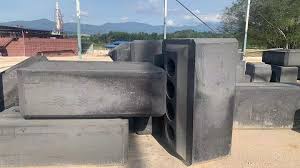Sustainable Practices in Carbon Anode Scrap Utilization
The global emphasis on sustainability and resource optimization has brought renewed focus to the effective utilization of carbon anode scrap. Generated as a byproduct during the aluminum smelting process, carbon anode scrap presents opportunities for recycling and reuse in various industrial applications. By adopting sustainable practices, industries can minimize waste, reduce costs, and contribute to a circular economy. This blog explores the sustainable methods for utilizing carbon anode scrap, its applications, and the benefits it offers.
What is Carbon Anode Scrap?
Carbon anode scrap refers to the residual carbon material left after the consumption of carbon anodes in the Hall-Héroult process during aluminum production. These scraps retain valuable carbon properties, making them suitable for repurposing in different industrial processes.
Why is Carbon Anode Scrap Utilization Important?
Environmental Benefits
- Reduces landfill waste and environmental pollution associated with disposal.
- Minimizes the extraction of raw materials, conserving natural resources.
Economic Efficiency
- Lowers production costs by reusing carbon materials instead of sourcing new ones.
Sustainability Goals
- Aligns with global efforts to promote sustainable practices in industrial operations.
Industrial Versatility
- Serves as a raw material for multiple applications across various industries.
Sustainable Practices in Carbon Anode Scrap Utilization
1. Recycling into New Anodes
- Process:
- Carbon anode scrap is crushed, cleaned, and blended with fresh raw materials to create new anodes.
- Benefits:
- Reduces the dependency on petroleum coke and pitch.
- Supports a closed-loop system in the aluminum industry.
2. Fuel Substitution
- Application:
- Used as an alternative fuel in industries like cement kilns and power generation.
- Benefits:
- Reduces reliance on traditional fossil fuels.
- Offers high calorific value, making it an efficient energy source.
3. Metallurgical Applications
- Process:
- Used as a reducing agent in the smelting and refining of metals such as steel and iron.
- Benefits:
- Enhances process efficiency while reducing raw material costs.
4. Production of Activated Carbon
- Application:
- Carbon anode scrap is processed into activated carbon for use in water filtration and air purification systems.
- Benefits:
- Expands the application scope of recycled carbon materials.
5. Carbon Material Blending
- Application:
- Blended with other carbon sources to produce high-quality electrodes or other industrial carbon products.
- Benefits:
- Enhances material properties while reducing waste.
6. Road Construction Material
- Process:
- Scrap is processed into aggregate material for use in asphalt production and road construction.
- Benefits:
- Provides an eco-friendly alternative to traditional construction materials.
Challenges in Sustainable Utilization of Carbon Anode Scrap
Impurities
- Residual impurities in the scrap can complicate recycling processes and limit its applications.
Transportation and Logistics
- Handling and transporting bulky scrap material can increase costs and carbon emissions.
Processing Costs
- Advanced cleaning and processing techniques may require significant investments.
Regulatory Barriers
- Environmental and industrial regulations can impact the adoption of certain utilization methods.
Benefits of Sustainable Utilization
Waste Reduction
- Diverts scrap from landfills, contributing to a cleaner environment.
Cost Savings
- Reduces reliance on expensive raw materials and lowers production costs.
Energy Efficiency
- Repurposed scrap often requires less energy to process compared to raw materials.
Carbon Footprint Reduction
- Minimizes emissions associated with the extraction and transportation of new materials.
Technological Innovations in Scrap Utilization
Advanced Cleaning Techniques
- Innovations in chemical and mechanical cleaning methods improve the purity of recycled scrap.
Automated Sorting Systems
- AI-powered systems enhance the efficiency of scrap sorting and processing.
High-Temperature Processing
- Advanced furnaces enable better utilization of scrap in metallurgical processes.
Blockchain for Traceability
- Blockchain technology ensures transparency and accountability in scrap recycling practices.
Industries Benefiting from Carbon Anode Scrap Utilization
Aluminum Production
- Reused in anode manufacturing, creating a closed-loop system.
Steel and Iron Industries
- Used as a reducing agent, enhancing smelting efficiency.
Cement Industry
- Provides an alternative fuel source for high-temperature processes.
Construction
- Processed into eco-friendly materials for road and building construction.
Water and Air Filtration
- Transformed into activated carbon for environmental purification applications.
Future Trends in Carbon Anode Scrap Utilization
Increased Recycling Rates
- Advancements in technology will improve the efficiency and scale of scrap recycling.
Circular Economy Models
- Greater emphasis on integrating carbon anode scrap into sustainable supply chains.
Collaborative Industry Initiatives
- Partnerships between industries to develop innovative applications for scrap utilization.
Global Regulations and Incentives
- Governments may implement stricter recycling mandates and offer incentives for sustainable practices.
Conclusion
Sustainable utilization of carbon anode scrap is a crucial step toward achieving environmental and economic goals in industrial operations. By adopting innovative recycling methods and expanding applications, industries can reduce waste, optimize resources, and contribute to a circular economy.
As the demand for sustainability continues to rise, businesses that prioritize the effective use of carbon anode scrap will not only improve their operational efficiency but also enhance their environmental responsibility, paving the way for a greener future.
